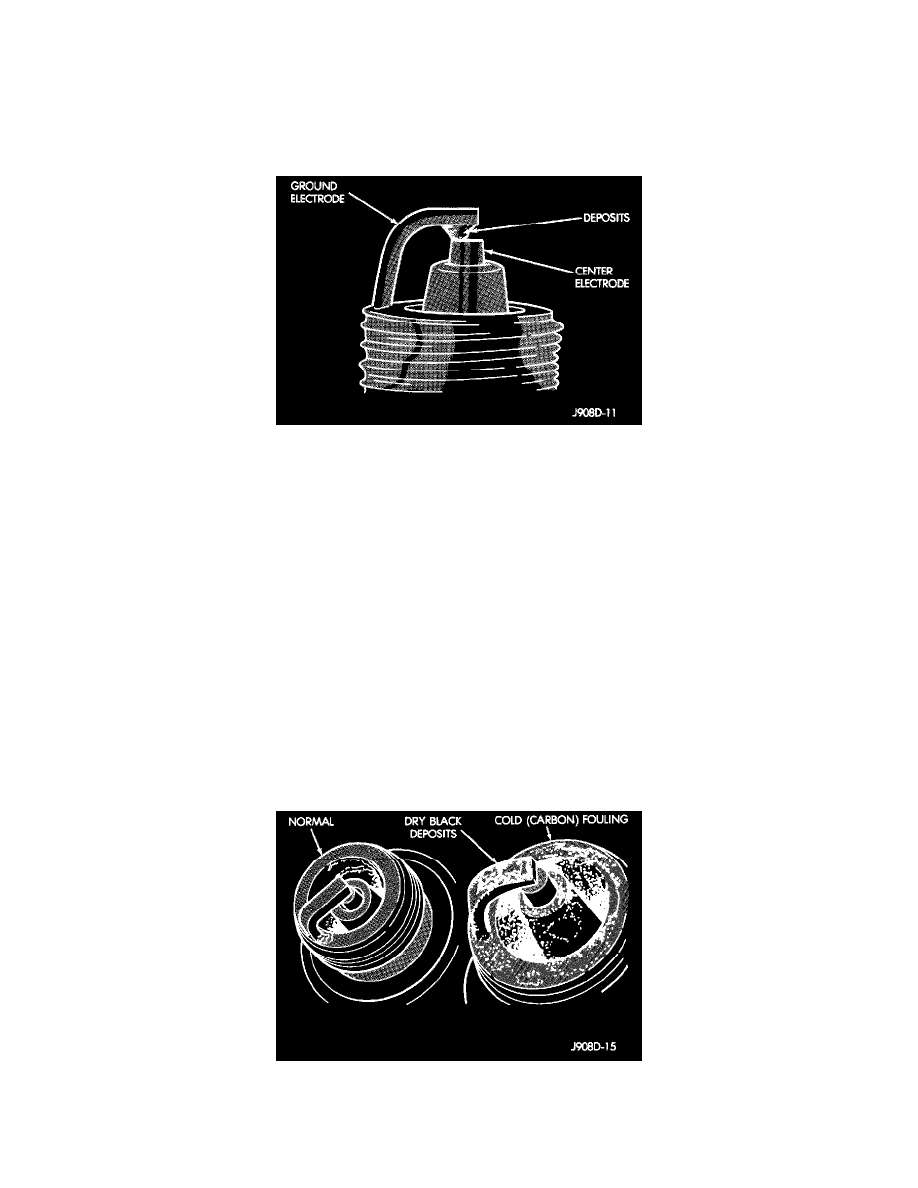Neon L4-2.0L VIN C (1997)

clogged air cleaner or poor ignition output.
Cold fouling is normal after short operating periods. The spark plugs do not reach a high enough operating temperature during short operating
periods. Replace carbon fouled plugs with new spark plugs.
Electrode Gap Bridging
ELECTRODE GAP BRIDGING
Electrode Gap Bridging
Loose deposits in the combustion chamber can cause electrode gap bridging. The deposits accumulate on the spark plugs during continuous
stop-and-go driving. When the engine is suddenly subjected to a high torque load, the deposits partially liquefy and bridge the gap between the
electrodes. This short circuits the electrodes. Spark plugs with electrode gap bridging can be cleaned and reused.
Heavy Colored Deposits
DESCRIPTION:
Colored coatings heavily deposited on the portion of the plug projecting into the chamber and on the side facing the intake valve.
POSSIBLE CAUSE
ACTION
................................................................................................................................................................................................................................................
Leaking Valve Seals (1 or 2 cylinders)
- Check the valve seals. Replace if necessary. Clean, regap, and reinstall
..................................................................................................................................................................................................................................................
Normal Operating Conditions
NORMAL OPERATING CONDITIONS
Normal Operation And Cold(Carbon) Fouling
The few deposits present will be probably light tan or slightly gray in color with most grades of commercial gasoline. There will not be evidence
of electrode burning. Gap growth will not average more than approximately 0.025 mm (0.001 in) per 1600 km (1000 miles) of operation for non
